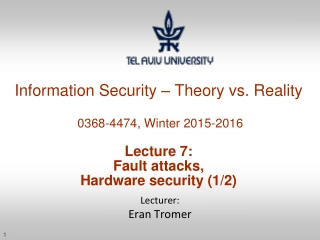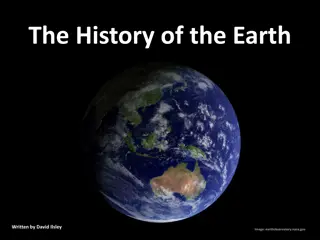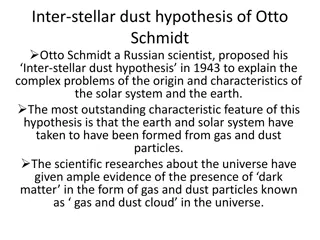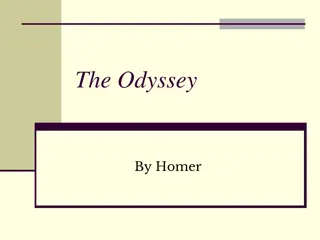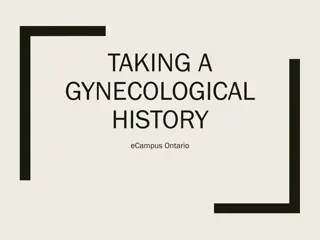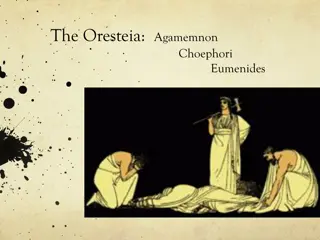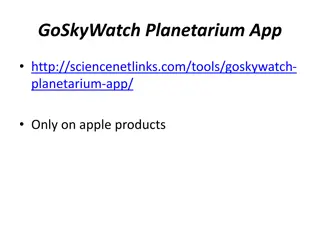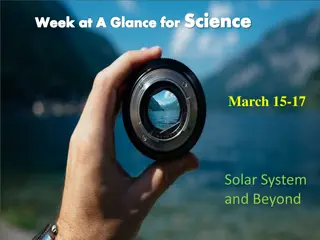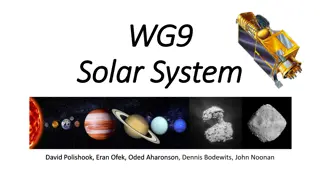Taking a Look at Trojan Asteroids
Group of asteroids sharing Jupiter's orbit, incl. Trojans & Greeks. Diverse composition includes organic-rich silicates, carbon, and possibly ice. Theories on their formation explored, offering insight into planet formation.
Download Presentation

Please find below an Image/Link to download the presentation.
The content on the website is provided AS IS for your information and personal use only. It may not be sold, licensed, or shared on other websites without obtaining consent from the author.If you encounter any issues during the download, it is possible that the publisher has removed the file from their server.
You are allowed to download the files provided on this website for personal or commercial use, subject to the condition that they are used lawfully. All files are the property of their respective owners.
The content on the website is provided AS IS for your information and personal use only. It may not be sold, licensed, or shared on other websites without obtaining consent from the author.
E N D
Presentation Transcript
AJAX Mission Proposal Taking a Look at a Trojan Asteroid
Background Group of asteroids that have the same orbit as Jupiter Two stable La Grange points 60 ahead (Trojans) and 60 behind (Greeks)
Background They have orbits a little over 5 AU 6,704 found as of now Possibly over 1 million over 1km diameter and average rotational period of 11.2 hours These numbers are our best estimates the mass of the asteroid belt
Background They have orbits a little over 5 AU 6,704 found as of now Possibly over 1 million over 1km diameter and average rotational period of 11.2 hours These numbers are our best estimates the mass of the asteroid belt
Background Most are D-type asteroids Low albedo (~0.04) Reddish electromagnetic spectrum. Composed of: organic rich silicates, carbon, anhydrous silicates and maybe ice in the center. No probes have been sent to examine them yet
Background Most are D-type asteroids Low albedo (~0.04) Reddish electromagnetic spectrum. Composed of: organic rich silicates, carbon, anhydrous silicates and maybe ice in the center. No probes have been sent to examine them yet
Theories of Trojan Asteroids Formation Theory 1: Jupiter Capture Theory 2: Kuiper Belt and Planetary Migration
Theories of Trojan Asteroids Formation Theory 1: Jupiter Capture Theory 2: Kuiper Belt and Planetary Migration
Theories of Trojan Asteroids Formation Theory 1: Jupiter Capture Theory 2: Kuiper Belt and Planetary Migration
What we can learn: Formation of planets If asteroids are primordial objects, they may inform us of: The chemical/geological processes that changed the small bodies that later made up the planets
What we can learn: Terrestrial Materials The Jupiter trojans may inform us of: How volatiles, organic compounds, C, H, and prebiotic materials were delivered to the inner solar system during the Late Heavy Bombardment (LHB) The origin of the LMB (4.1-3.8 Ga)
AJAXs Focused Payload Addresses: 2013-2022 Planetary Science Decadal Survey goals for Trojan missions: Geological Elemental composition Mineralogical Geophysical
Stage 1: Initial Approach Uses multispectral imaging at various phase angles to search for natural satellites and dust Could be signs of frequent comet impacts Determines shape and pole position of asteroid
Stage 2: Descent Into Lower Orbits Completes global mapping through high-resolution stereo and multispectral imaging Measures gravity field to determine density and estimate interior porosity
Stage 2: Descent Into Lower Orbits Creates a high-resolution representation of the surface during a low flyover Measures hydrogen abundance
Stage 3: Landed Package Measures abundance of 20 elements including C and H concentrations Measures physical and mechanical properties of asteroid s regolith
What we learn from AJAX From composition measurement: Trojans possible role in delivering prebiotic materials to terrestrial planets From regolith and porosity measurements: How planetesimals form and merge into planets
Sustainability on Earth as a Result Would provide knowledge of planetary origins along with: The source of volatiles such as: Nitrogen Water Carbon Dioxide Organics on terrestrial planets
Sustainability as a Result Knowing how volatiles were formed can help learn about avoiding their destruction on Earth Could teach us about simulating the formation of these volatiles on Earth
Other Benefits Learning about how we came about and why Good return on investment High quality pictures and data of an unexplored area


